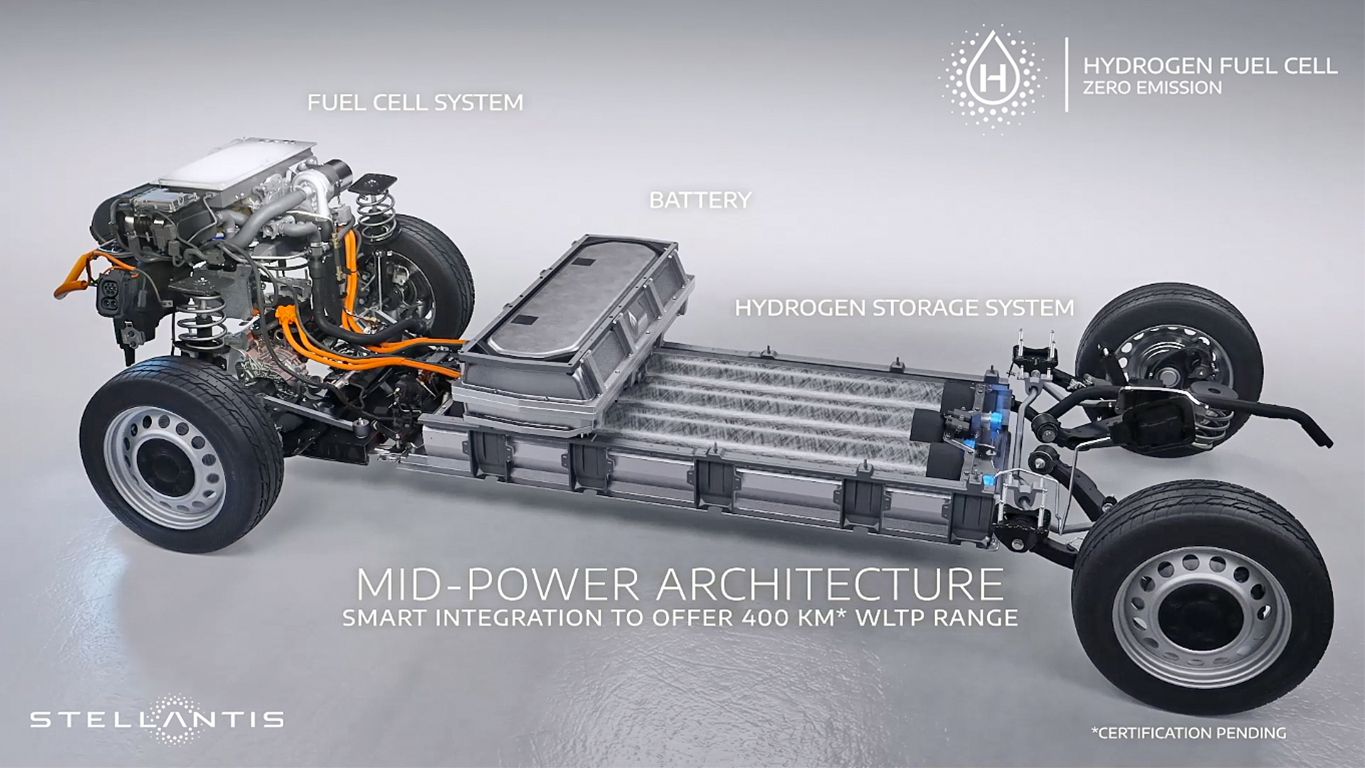So far, we know hydrogen propulsion from passenger cars such as the Toyota Mirai and Hyundai Nexo. However, it has a much better chance in freight transport, because the longer the distance and the heavier the load, the more clearly lithium batteries are not enough. Stellantis is making the first step out of European players, and it will introduce hydrogen deliveries with a tonnage capacity this year.
Statistics show that almost half of light commercial vehicle users regularly travel longer than 300 km. The battery drive is not enough for them, which is currently proven by the battery versions of the Peugeot Expert and its siblings, which are also introduced to our market. They reach a range of 330 km only in laboratory conditions.
The same cars, ie Peugeot Expert, Opel Vivaro and Citroën Jumpy, will therefore also receive hydrogen propulsion this year. Anyone expecting a double run may be disappointed. The estimate is around 400 km, which is not much due to the physical capabilities of the system. The manufacturer chooses the first step economically and is right that they usually do not need more than 400 km of delivery services. In long-distance express transport, cars of a larger class, such as the Peugeot Boxer and Opel Movano, will come to the fore.
The range results from a modest volume of tanks that absorb 4.4 kg of hydrogen at the usual pressure of 700 bar. For comparison – Toyota Mirai refuel 5.6 kg and Hyundai Nexo 6.3 kg. In practice, passenger cars consume about 1 kg / 100 km and fully loaded vans can be expected to be a little more thirsty. However, composite tanks resistant to high pressure, shock and fire are expensive and price-sensitive delivery cars.
The second discounting trick is in the electrochemical cells themselves. While passenger cars use a bundle of cells with an output of around 100 kW, Stellantis deploys less than half the device – 45 kW. This saved a lot of money, as articles are the most expensive thing for the whole thing so far.
In order for the engine to deliver 100 kW at full throttle, energy is stored from the cells first in the battery. This is the case with all hydrogen cars, as hydrogen cells cannot react as immediately as required by the driver. But while elsewhere the battery only covers short-term spikes, here hydrogen cells replenish it continuously “at half throttle”.
The battery needs more capacity for this, which Stellantis solved by installing a set of plug-in hybrid models. It takes 10.5 kWh, seven times more than the Hyundai Nexo, and gives the car an emergency range if it runs out of hydrogen.
The solution is rather an emergency, because by “passing” through the battery, part of the energy is lost again, but so far the production savings take precedence. When the production of hydrogen cells reaches larger series, the card should be turned over.
However, the French also left nothing to chance in industrial preparation. In 2018, Stellantis – then still as Groupe PSA – bought a third stake in the giant Faurecia automotive parts company. A year later, she set up a joint hydrogen cell plant with Lyonin in Lyon. The factory with the Symbio brand is at the end of the decade produce 200,000 bundles per year.
Faurecia will also supply pressure tanks. She has not said where she will produce them, but she is currently completing the purchase of a majority stake in one of the largest Chinese companies in the industry, CLD. One million hydrogen cars are expected to be sold in China in 2030, and it is gratifying to see that European companies can also make a profit.
The third to the party is Opel, from whose development center in Rüsselsheim comes a drive unit integrating electrochemical cells and control electronics. Opel has already pursued hydrogen technology under the wings of General Motors and he also presented some prototypes in the Czech Republic.
There are a hundred filling stations in Germany today, a little over seventy in France next year, and development plans are just beginning. The traffic will therefore be concentrated mainly in large cities, which support the infrastructure for public transport. Nevertheless, it is worth acknowledging that the Franco-German tandem is launching hydrogen supplies before Toyota in Japan, Hyundai in Korea and General Motors in America.
– .

/data/photo/2020/04/02/5e85761db692f.jpg)
